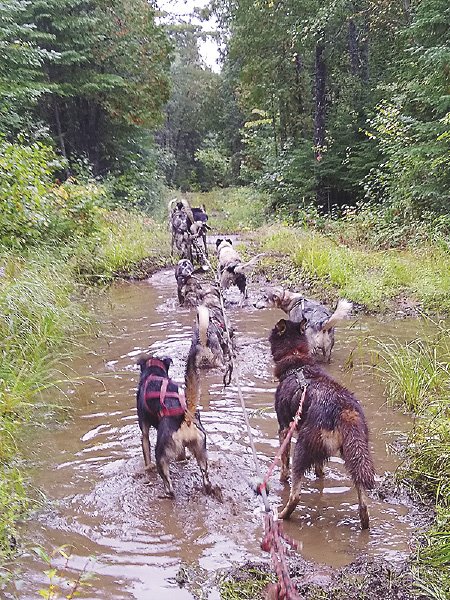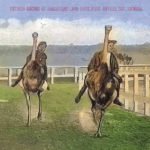Matt and I are going into our 10th year of mushing. During this time, I have become keenly aware that my identity as “musher” sets me apart. The subject of mushing is always a conversation starter, usually kicked off with “How many dogs do you have?” Here are some of the questions commonly asked that I will attempt to answer from our 10 years of experience.
We currently have 33 dogs including one puppy and three retirees. We have had as many as 40 and as few as six when we started, and I tell you everyone who asks how many dogs we have find both of these numbers to be shocking. I told a woman at Fleet Farm once about my eight dogs as I was filling my cart with bags of kibble and she looked faint trying to imagine this scene. Now whether, the number is 25, 35 or 40, the curious party just raises his eyebrows in disbelief.
#1. Do you know all their names?
I liken our group of dogs to a teacher’s classroom. If I walked into a first-grade classroom, I would surely feel lost in a sea of children all of similar size. But if I were with that same group of kids every day, getting to learn each of their habits and personalities, I would quickly learn to tell them apart. It is the same with dogs. While a number of our dogs are black with gold eyebrows, each of their personalities is quite distinct and from my bed at night when one dog starts a howl or raises his voice to bark, I can usually tell who is causing the ruckus. Even our two-year-old is doing a pretty bang-up job of learning their names, though some days she just calls them all Beezus, which is still pretty cute.
#2. How do you run them when there isn’t snow?
Every mushing kennel is different, but for us the summer is a busy, busy time, and the weather is warm, well, sort of. When the snow is gone, we hook the team up to an ATV. This year, the dogs were on vacation from mid-May to mid-August. They mostly sat around and soaked up the sun. When nighttime temps start falling below 50, we hook up teams and have them pulling the ATV. The ATV engine is running. Mostly we just want the dogs to think they are pulling the ATV—their tug lines are tight and they get lots of conditioning. Inevitably, there is an adjustment for them when we switch to sleds.
#3. What do you feed them?
Again, every kennel is different, though almost all sled dogs eat some combination of meat and high-quality kibble. We feed quite a lot of kibble—probably four to five pallets a year—that’s 10,000 pounds. In the summer, we only feed kibble because it’s much easier to deal with than meat. When the weather turns cold in October/November, we start buying frozen meat—most of which comes in 50-pound blocks from meat processing plants. We chop these blocks into smaller chunks that can be individually thawed for each meal. Chopping raw meat with an axe involves meat bits flying everywhere. If you walk into our cabin in winter, you’ll find blocks of meat in buckets in various stages of thawing. It takes two full days to take a block of meat from hard frozen to something you can easily mix into water. We feed a few thousand pounds of raw meat each year.
#4. Do they all get along?
In short, no. There are a few dogs that do get along with everyone else. But largely, they behave like a pack and many of them want to be top dog. Some genetic lines are more aggressive than others, we’ve found. Some females simply cannot get along with other females and same with males. Some dogs are simply easy to fluster and need to run or live next to the same dog all the time. There are only one or two dogs that can run with Ringo. He gets feisty in harness and Cha-Cha knows how to stay out of his way. It’s a fine art, coming up with pairs of dogs that will work well together, one of the many variables in mushing that make mushing a challenge.
#5. Is this your job or is it a hobby?
There are very few mushers who make any profit from mushing. The ones that do are running some kind of full-scale tour operation or placing in the top three of every race they run, or some combination of both. I have met a few mushers that are able to work a lot in the summer in order to take the winter off to run dogs, but that’s a select group. Most mushers are working day jobs to pay for their kibble and vet bills and if you can win something at the races to pay for your hotel, race fee and gas money, then life is good.
***
Though we’ve been training dogs for two months already, we are yet undecided about our winter race schedule. We would like to try something new if possible. Most likely this would be a race similar to races we have already run but would require more travel.
Mushing will be a popular conversation topic with a new movie about to come out called “The Great Alaskan Race,” about the mushers and dogs that brought serum to Nome after an epidemic of diptheria broke out. Also, a new race in Minnesota this year called The Klondike Dog Derby will be held on Lake Minnetonka in February. Forty mushers are signed up to run, many of them from the North Shore.




